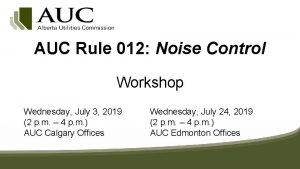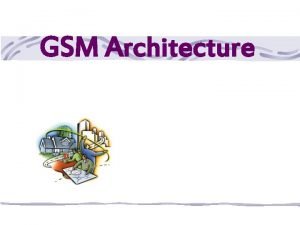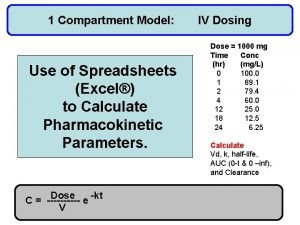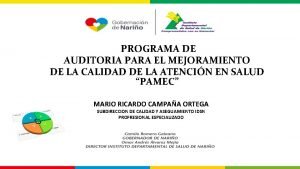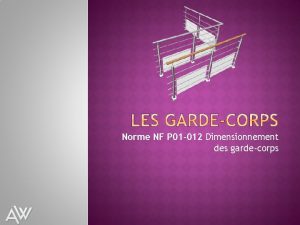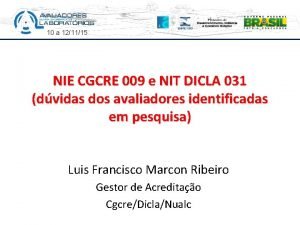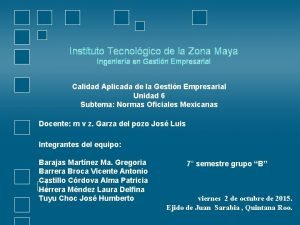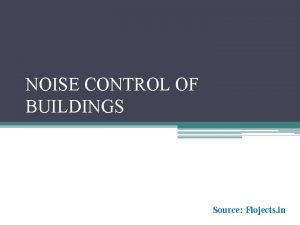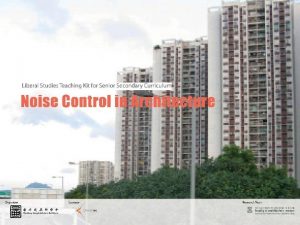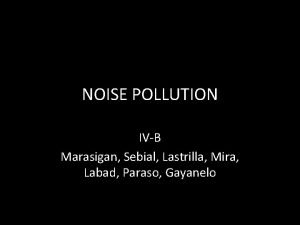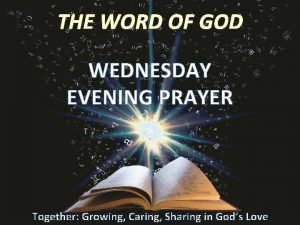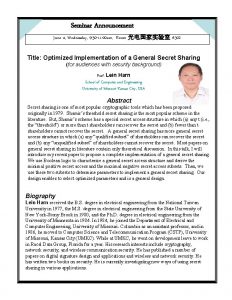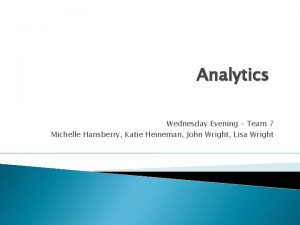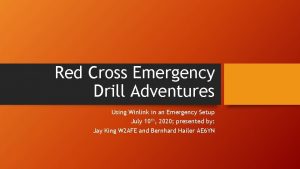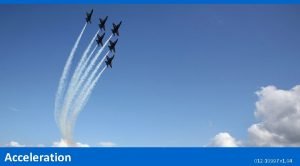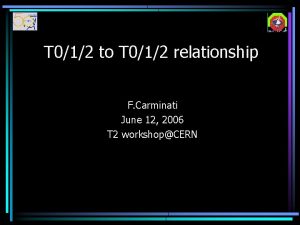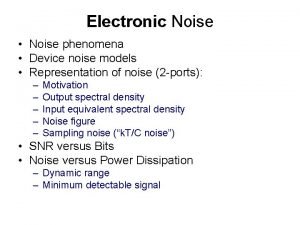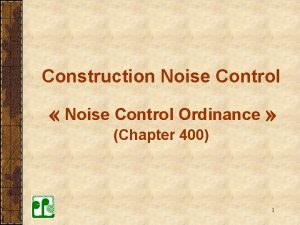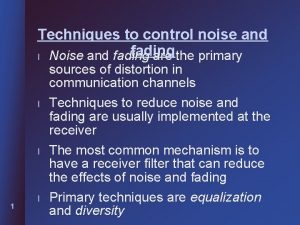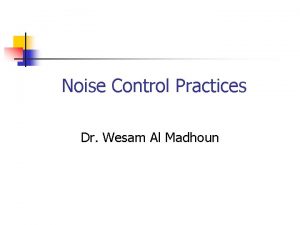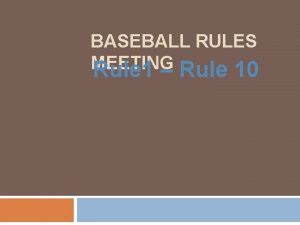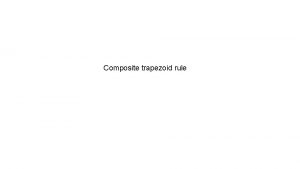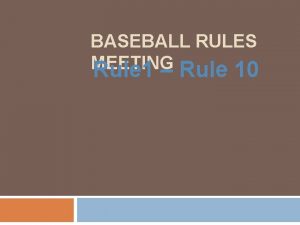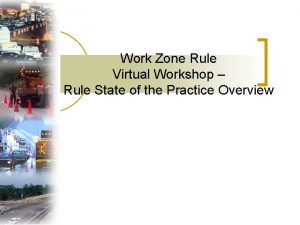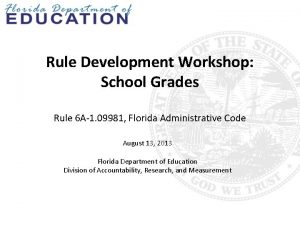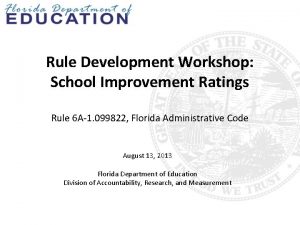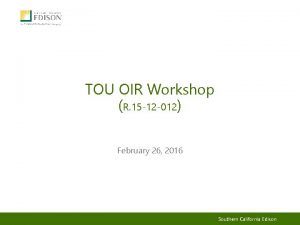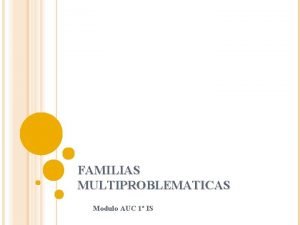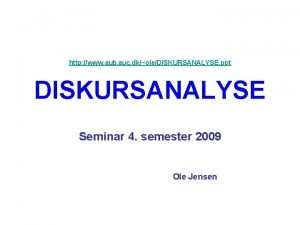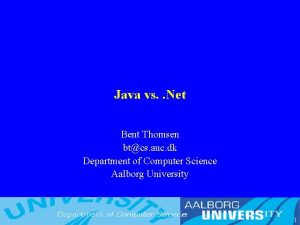AUC Rule 012 Noise Control Workshop Wednesday July


























- Slides: 26

AUC Rule 012: Noise Control Workshop Wednesday, July 3, 2019 (2 p. m. – 4 p. m. ) AUC Calgary Offices Wednesday, July 24, 2019 (2 p. m. – 4 p. m. ) AUC Edmonton Offices

Agenda 1. Introductions 2. Workshop objectives 3. Overview of Rule 012: Noise Control 4. Changes to Rule 012 5. Open discussion 6. Closing remarks 2

1. Introductions • Round table introductions • Safety procedures • Meeting process 3

2. Meeting Objectives • Summarize the major changes to Rule 012 • Open discussion 4

3. Overview of Rule 012 “This rule requires that a noise impact assessment predict compliance for a proposed facility by comparing cumulative sound levels with permissible sound levels applicable at affected dwellings”. “Noise from a facility, measured cumulatively with noise from other energy-related facilities, shall not exceed the permissible sound level determined in accordance with this rule. ” 5

Definition of Permissible Sound Level Permissible sound level = Basic sound level defined in Table 1 + Adjustments Categories Daytime (10 d. BA) Class A Dwelling density Proximity to transportation Minimum basic sound level 40 d. BA (ambient monitoring adjustment) Class B (for temporary noise generating activities) Class C (for wind noise masking) 6

Table 1: Basic Sound Level (Nighttime Permissible Sound Level) Proximity to transportation Category 1 (>500 m) Category 2 (30 to 500 m) Category 3 (<30 m) Dwelling density per quarter section of land 1 to 8 Dwellings 9 to 160 Dwellings >160 Dwellings 40 43 46 45 48 51 50 53 56 7

Determination of Cumulative Sound Level Cumulative sound level = Applicant’s proposed facility + Baseline sound level = Ambient sound level + Energy-related facilities Existing Approved Proposed 8

Appendix 8 – Sound Definitions 9

Noise Compliance 41 40 39 Sound Level (d. BA) 38 37 36 Permissible Sound Level Compliance Margin Noise Headroom Cumulative Sound Level 35 34 33 32 Ambient Sound Level 31 30 10

4. Rule 012 Changes • Major topics: • Simultaneous applications • Time extensions • Other topics: • Predicted exceedances • Definition of permissible sound level • Comprehensive sound level surveys • Ambient sound level • Noise model verification • Complaint investigation form • No net increase • Deferred facilities • Wind noise masking adjustment • Low frequency noise analysis 11

i) Simultaneous Applications • Cumulative sound levels must include the contribution from “proposed” facilities. • Multiple facilities with adjacent or overlapping study areas sometimes submit their applications around the same time. 12

• A new section (Section 1. 7) was added in Rule 007 o New definition: deemed complete • When determining an application’s completeness, the Commission considers the following two factors: o Final project layout o AUC’s information requirements • “The Commission will advise applicants, in writing, when it has deemed an application to be complete. ” 13

• A new paragraph (Subsection 2. 7 (3)) was added in 012 to specify that: Rule “Once an application for a proposed facility has been deemed complete, the proposed facility must be accounted for in noise assessments prepared for any facilities with adjacent or overlapping study areas. ” 14

ii) Predicted Exceedances • Noise assessments sometimes show modelled baseline sound levels already exceeding permissible sound levels. 15

• Rule 012 was updated to provide guidance on assessing compliance in areas with elevated baseline levels. No Predicted baseline exceedance? Yes Calculate cumulative sound level by adding applicant’s proposed facility to baseline Convincing explanation for why baseline model predictions may be overly conservative Yes No Assess compliance through comparing cumulative sound level with permissible sound level Assume baseline compliance with permissible sound level Mitigate baseline facilities 16

iii) Time Extensions • Licensees often request extensions to approved timelines for facility construction. • Construction delays can restrict future energy-related development in the area. • New dwellings may be built in close proximity to an approved facility, if construction of the approved facility is delayed. 17

• Rule 012 was updated to specify circumstances that require a new noise impact assessment to support a time extension request (Section 1. 5): o There are major amendments to the approved facility; o The most affected dwelling(s) have changed (e. g. , new dwellings have been constructed in the area); or o There are new energy-related facilities with the potential to influence cumulative sound levels at affected dwellings. 18

iv) Definition of Permissible Sound Level at New Dwellings • Landowners sometimes construct new dwellings in close proximity to an approved, but not constructed facility. • Two new sections (sections 2. 4 and 2. 5) were added to specify how to define permissible sound levels for such dwellings. 19

• The goal is to balance the interests of approved licensees and the interests of landowners. Facility Licensee Landowners 20

• Time limit: approved construction completion date • e. g. , “Unless otherwise authorized by the Commission, construction of the power plant shall be completed by December 31, 2019. ” (Approval 22665 -D 02 -2018 Sharp Hills wind power project) • The revised Rule 012 uses the construction completion date in a facility's approval as a threshold for defining permissible sound levels at a new dwelling that is built close to an approved but not constructed facility. 21

Example 4 in Appendix 6 Approved construction completion date Approval (1) (2) Renewed approval Construction (1) (1) A new dwelling needs to accommodate the approved facility’s noise contribution. (2) An approved facility needs to account for a new dwelling in its time extension application and may need to implement mitigation to achieve compliance at the new dwelling. 22

Approved construction completion date Approval (1) (2) The greater Renewed approval Construction (1) Modelled/measured sound level at the new dwelling Conventional permissible sound level defined based on Table 1 23

5. Open Discussion 24

6. Closing Remarks 25

Thanks for attending the meeting! 26
 Auc rule 012
Auc rule 012 Pcm companding
Pcm companding Components of gsm network
Components of gsm network Auc farmacologia
Auc farmacologia Calculate auc excel
Calculate auc excel Auc farmakologia
Auc farmakologia Define relative bioavailability
Define relative bioavailability Zabiegi sanitarne i specjalne
Zabiegi sanitarne i specjalne Circular 012 pamec excel
Circular 012 pamec excel Norme nfp01 012
Norme nfp01 012 For-cgcre-012
For-cgcre-012 Ioit-012
Ioit-012 Nom-012-scfi-1994
Nom-012-scfi-1994 8 effects of water pollution
8 effects of water pollution +noise +control +of +buildings
+noise +control +of +buildings Noise control in architecture
Noise control in architecture Noise pollution control methods ppt
Noise pollution control methods ppt Monday tuesday wednesday thursday friday calendar
Monday tuesday wednesday thursday friday calendar Wednesday evening prayer
Wednesday evening prayer Wednesday seminar
Wednesday seminar History ia grade boundaries
History ia grade boundaries Michelle hansberry
Michelle hansberry Wednesday diary
Wednesday diary Good morning happy february
Good morning happy february Monday is my favourite day
Monday is my favourite day Skinny wednesday
Skinny wednesday Flmsg download
Flmsg download
